Choosing, cutting & sawing
to Lex Pott’s window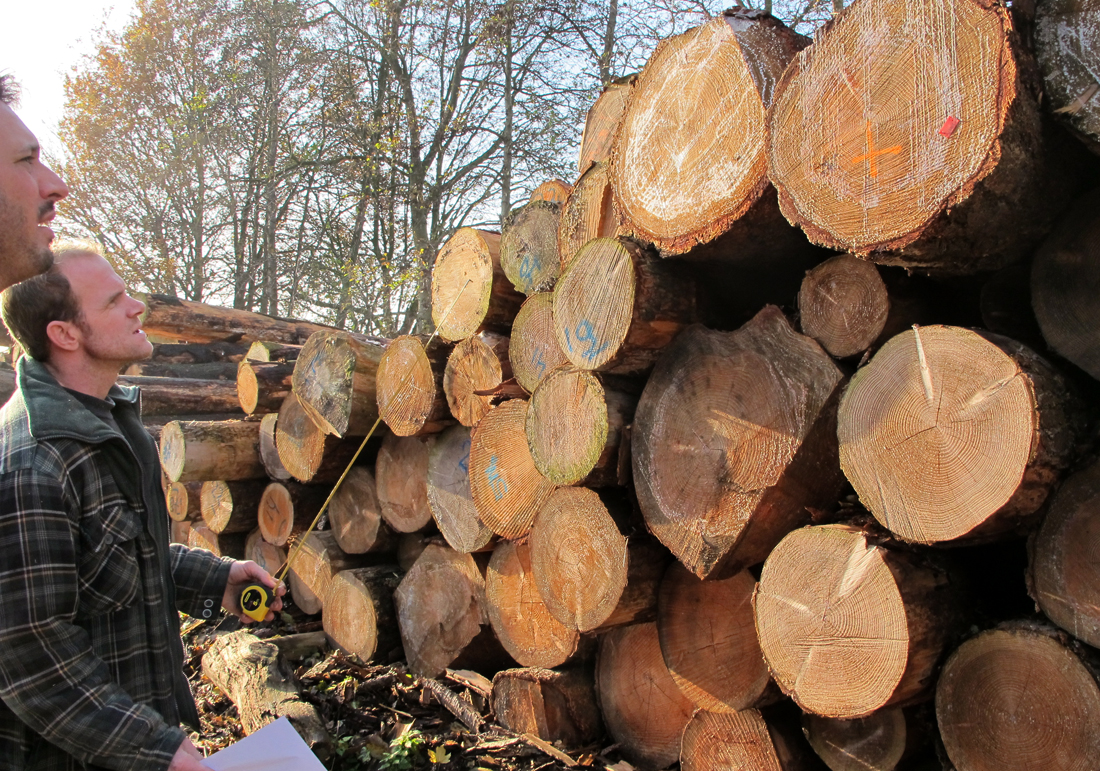
Last Tuesday, we drove to Harrie's sawmill in Echteld to pick a tree and do the majority of the sawing, for which we made a proposal some weeks back.
Choosing a perfect tree, together with Harrie van Rooijen. The piece is lifted with a small crane and about to be transported to the sawmill.
We had already decided a Douglas fir would fit our project best. However, deciding which Douglas fir to choose from the hundreds of trees Harrie had lying around his property was not all that easy.
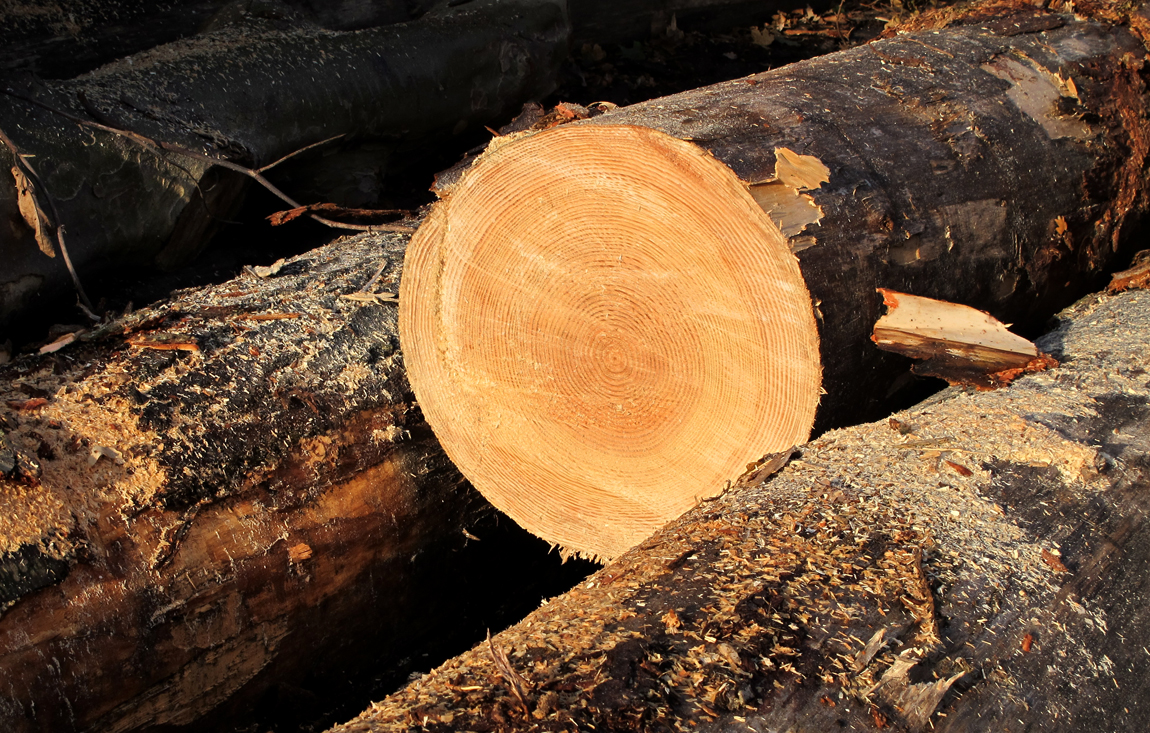
We had some special requirements: the diameter had to be approximately 50 centimeters, the heart of our tree should lie in the exact centre, and the annual rings had to be a little wider than usual. Very thin annual rings could cause problems during the sand blasting.
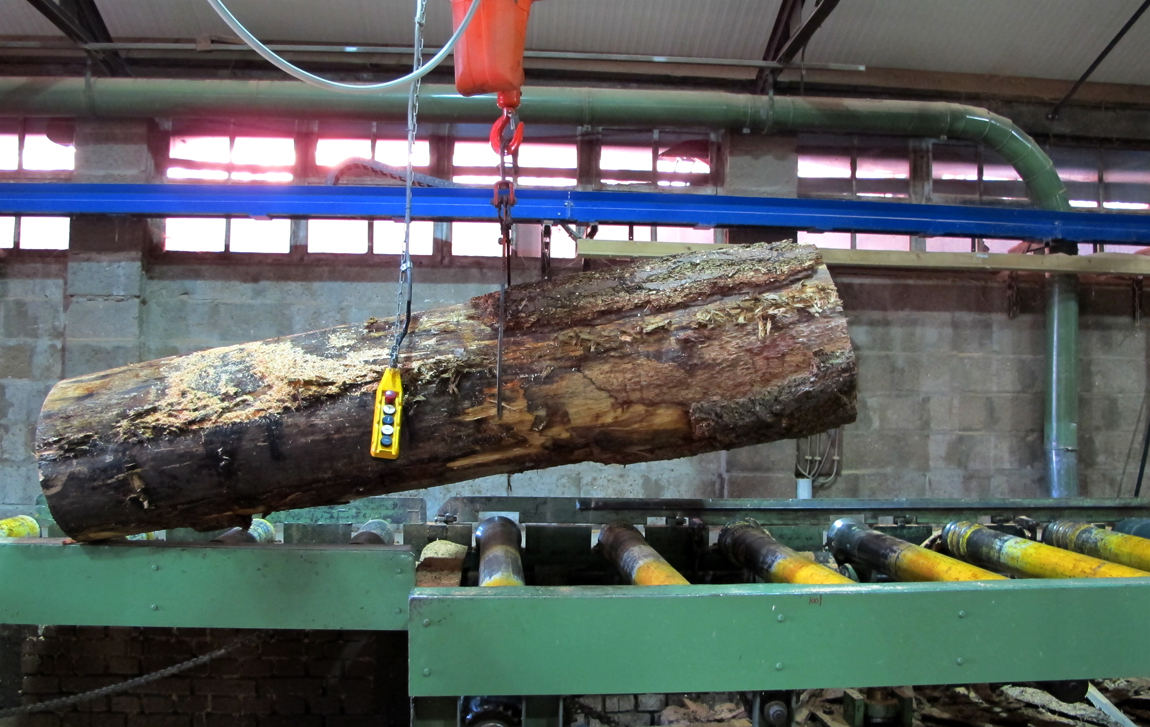
A fine tree was picked from which we cut off the lower part, closest to where it once had its roots. The higher up a tree, the more branches you find – branches that are themselves rooted inside the tree as well, cutting straight through all the annual rings.
We cut off 2,20 meters and had it hoisted inside the sawmill. As we learned from previous steps in this process, difficulties pop up when you least expect them – those extra 20 centimeters might come in handy in the end.
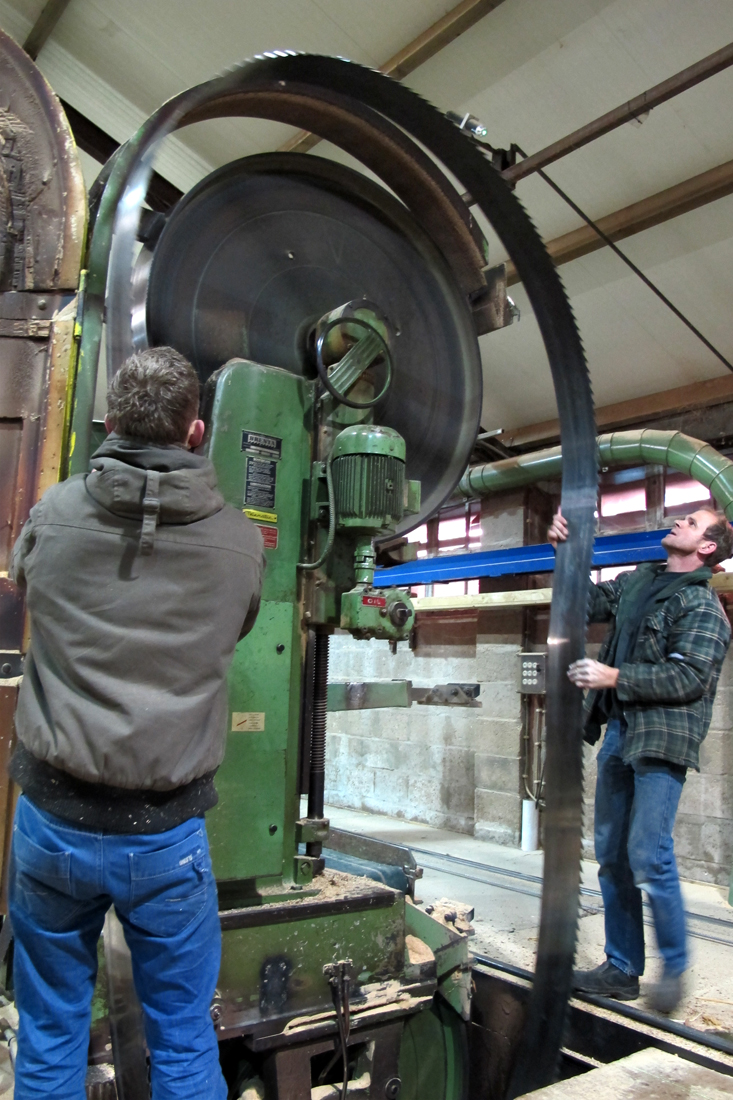
Harrie installing a just sharpened saw blade.
The first step of the quarter/rift sawing
We needed the wood to be sawn in different thicknesses, each thickness corresponding to a different design. For the 15 millimeter pieces, we asked Harrie to leave the bark intact, as this was an important element of the product we would use it for.
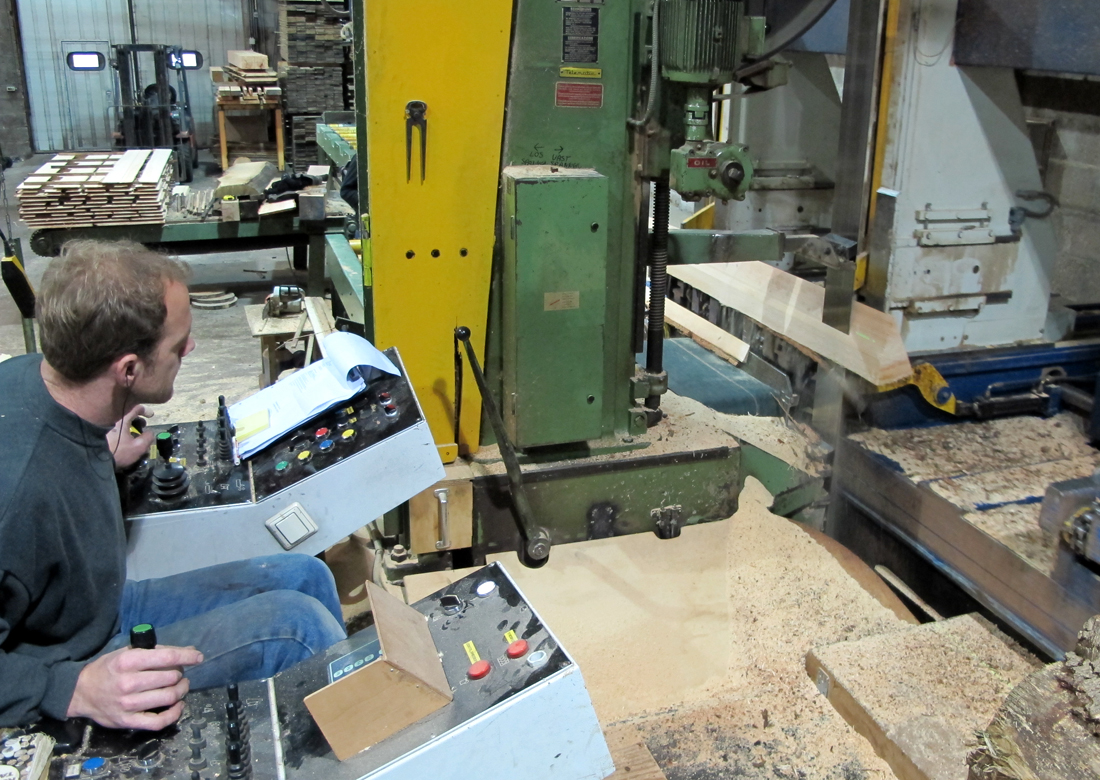
We wondered which sawing technique we were going to use: was it quarter sawing, as we had originally thought, or was it rift sawing – a slightly different technique that seemed to look more like what we had drawn in our proposal? I couldn't tell you, Harrie said, it's a bit of both. Not that it mattered: though the sawing was a long and complex process, after a couple of hours we were the owners of some excellent pieces of wood. They were cut in such a way the annual rings showed in perfect straight lines along the sides, just as we wanted.
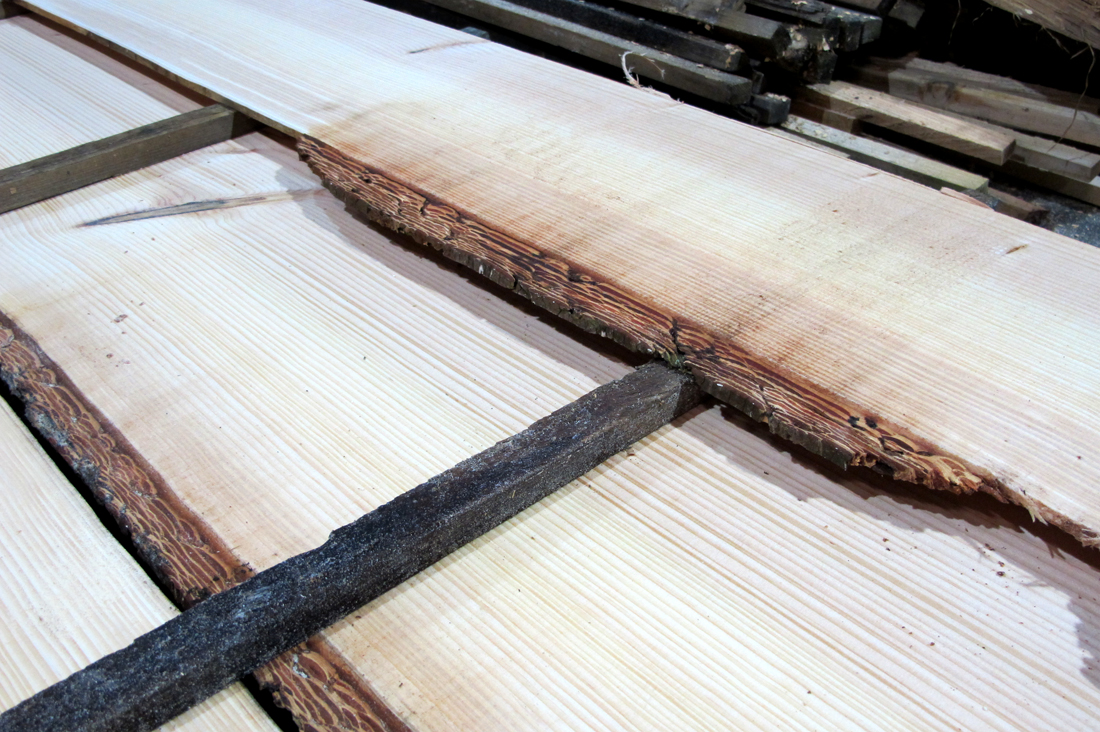
Photos and videos by Elsa Paternotte.
To make sure the wet wood has no chance of moulding, the planks are stacked with some slacks in between. Harrie will soon move the stacks to a shelter outside, where they can breath and dry in the wind. This natural ventilation will prevent the wood from rotting.
Our planks are stacked-up with small slats between them, giving the wood some space to breath.
